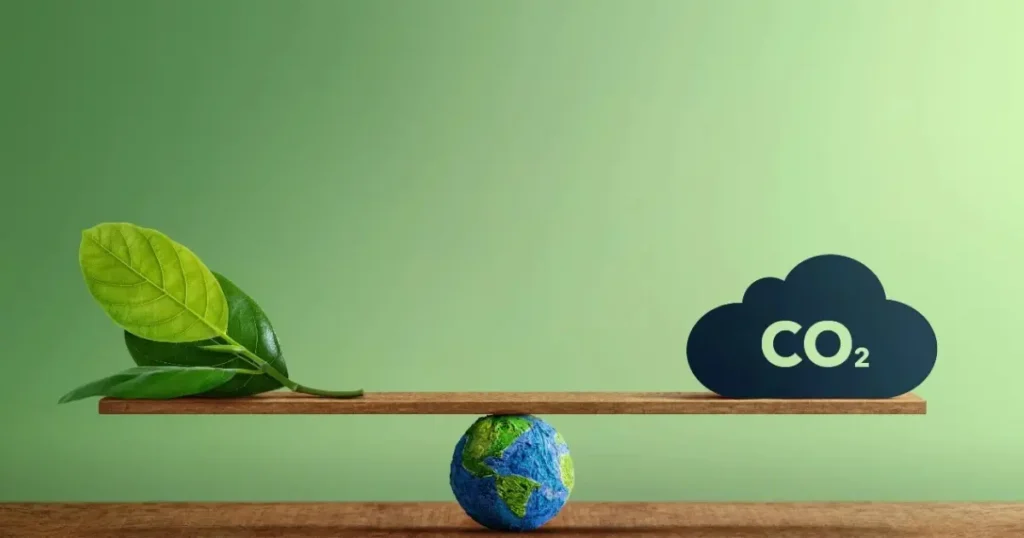Carbon Footprints : Can Hydroponics Radically Reduce Them in Agriculture?
Table of Contents
ToggleIntroduction
Agriculture is one of the largest contributors to carbon emissions worldwide. From deforestation and excessive water use to methane emissions from livestock and the overuse of synthetic fertilizers, traditional farming methods significantly impact the environment. However, with the advent of hydroponics, a revolutionary farming method, there is a growing hope that carbon footprints in agriculture can be drastically reduced. But how effective is hydroponics in mitigating climate change? Let’s explore how this sustainable farming approach can lead to a greener future.
Understanding Carbon Footprints in Agriculture
A carbon footprint refers to the total greenhouse gas (GHG) emissions caused directly and indirectly by human activities. In agriculture, these emissions stem from various sources, including:
- Soil degradation leading to carbon release.
- Use of chemical fertilizers and pesticides.
- Water-intensive irrigation systems.
- Deforestation for farmland expansion.
- Fuel consumption for machinery and transportation
As food demand continues to rise, the environmental burden of traditional farming is increasing. This is where hydroponics presents itself as a game-changer.
What is Hydroponic Farming?
Hydroponics is a soilless farming technique that uses nutrient-rich water to grow plants. This system allows crops to thrive in controlled environments, often indoors or in greenhouses, significantly reducing the reliance on natural resources like soil and excessive water. Hydroponic farms are designed to optimize resource use while minimizing waste and emissions, making them a sustainable alternative to traditional farming methods.
Deep Water Culture (DWC)
.Plants are suspended in nutrient-rich water.
Nutrient Film Technique (NFT)
A thin film of nutrient solution continuously flows over the roots.
Aeroponics
Plant roots are misted with a nutrient solution for maximum absorption.
Drip System
Nutrient solutions are delivered to plants through a controlled drip mechanism.
Ebb and Flow System
A timed system that floods and drains nutrients to plant roots.
How Hydroponics Reduces Carbon Footprints

Minimal Land Use and Zero Deforestation
.
One of the biggest contributors to carbon footprints in agriculture is deforestation. Traditional farming requires vast amounts of land, leading to the clearing of forests, which act as carbon sinks. Hydroponics, however, allows for vertical farming and indoor cultivation, eliminating the need for deforestation. By reducing land usage, hydroponics helps preserve forests and reduces carbon emissions associated with land conversion.
Lower Water Consumption
.
Traditional farming consumes approximately 70% of the world’s freshwater. In contrast, hydroponics uses up to 90% less water by recirculating it within a closed-loop system. This efficiency significantly reduces the energy required for water pumping and irrigation, indirectly cutting carbon emissions associated with water management.
Elimination of Synthetic Fertilizers and Pesticides
.
Synthetic fertilizers and pesticides contribute significantly to greenhouse gas emissions, particularly nitrous oxide, which is 300 times more potent than carbon dioxide. Hydroponic systems use nutrient solutions tailored to plant needs, reducing or eliminating the use of chemical fertilizers. Additionally, since hydroponic environments are controlled, there is less risk of pest infestations, leading to a lower reliance on pesticides.
Reduction in Transportation and Food Miles
.
A significant portion of agriculture’s carbon footprint comes from transportation. Traditional farms are often located far from urban centers, requiring long-distance shipping, which burns fossil fuels. Hydroponic farms, especially those established in urban areas, enable local food production, reducing food miles and the associated carbon emissions.
Energy Efficiency with Renewable Integration
.
Critics argue that hydroponics relies on artificial lighting, increasing energy consumption. However, the integration of renewable energy sources like solar panels, wind turbines, and geothermal energy can make hydroponic systems carbon-neutral or even carbon-negative. Smart energy management further enhances efficiency, ensuring that hydroponic farms operate sustainably.
Challenges and Future Prospects
Despite its potential to reduce carbon footprints, hydroponics faces challenges such as high initial investment costs, dependency on electricity, and technical expertise requirements. However, advancements in technology, increasing adoption of renewable energy, and government incentives for sustainable farming are paving the way for wider adoption.
As more farmers, businesses, and policymakers recognize the environmental benefits of hydroponics, the industry is expected to grow rapidly. Innovations in energy-efficient lighting, automation, and sustainable nutrient sourcing will further enhance hydroponic farming’s ability to combat climate change.
-
Bacteria: The Remarkable Role of Microbes for Growing Plants in Hydroponics
-
Hydroponics: The Rookie Mistakes of Growing Plants
-
Chlorine: The Incredible Key to Thriving Hydroponic Plants
-
Molybdenum: Astonishing Importance for Hydroponic Plant Growth
-
Boron: The Astonishing Importance for Plants Growing in Hydroponics
-
Copper: A Powerful Element for Hydroponic Plant Growth
-
Zinc: The Powerful Secret to Hydroponic Plant Growth
-
Manganese: Essential role for Hydroponic Plant Growth
-
Iron: The Crucial Role of Iron in Hydroponic Plant Growth
-
Sulfur: The Vital Key to Thriving Hydroponic Plant Growth
-
Magnesium: The Crucial Role for Thriving Hydroponic Plants
-
Calcium: The Critical Importance for Thriving Hydroponic Plants
Conclusion
Hydroponics presents a revolutionary approach to sustainable farming by drastically reducing carbon footprints in agriculture. From conserving water and minimizing land use to cutting transportation emissions and eliminating chemical fertilizers, hydroponics offers a pathway to an eco-friendly future. While challenges remain, continued innovation and investments in green technology can help scale hydroponic farming globally. By embracing this sustainable practice, we can move closer to a carbon-neutral agricultural system and contribute significantly to the fight against climate change.

